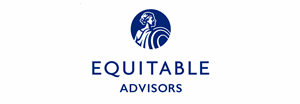Dunkirk Observer
by Mike Rush
October 7, 1998
Ehmke Came Within One Out of History
He blanked the Boston Braves on June 5, 3-0, and the Brooklyn Dodgers on June 11, 6-0.
Well, 15 years earlier, in 1923, Silver Creek native Howard Ehmke came within one hit of becoming the first player to pitch back-to-back no-hitters.
The lone no-hitter of Ehmke's career came September 7 at Shibe Park in Philadelphia when he was pitching for the Boston Red Sox against the Connie Mack managed Athletics.
Ehmke, who finished with a 166-166 career record, had to make a spectacular catch in the second inning off the bat of Philadelphia's Heinie Scheer. He won his 18th game of the season that day for a very bad Red Sox team, one which is considered one of the 30 worst teams in major league baseball history.
The start following the no-hitter would cause plenty of controversy for years.
Ehmke went into Yankee Stadium on September 11 with a chance to make history.
And according to Sheridan's Terry Niebel, who has done a couple of research projects on the former major leaguer, every one of the 15,000 fans at Yankee Stadium thought they had witnessed a second consecutive no-hitter, something which had never been done in major league history.
In the bottom of the first inning, Yankee leadoff hitter Lawton "Whitey" Whitt hit a slow bouncer to Boston third baseman Howard Shanks that bounced off his glove and hit his chest. Whitt beat the throw by a step.
In those days, according to Niebel, scoreboards didn't indicate whether balls in play were hits or errors. Everyone in the stadium assumed it was an error on Shanks.
Ehmke went on to retire the rest of the Yankees without giving up a hit.
There weren't many hard hit balls after that first inning "hit."
Following the game, Ehmke received congratulations from home plate umpire Tommy Connolly.
As everyone was commending him for a job well done, Ehmke learned the "error" had actually been ruled a hit.
"At the time this was very controversial," Niebel said. "He was given official credit for only giving up one hit in 18 innings, which was the record at the time."
Ehmke did go on to win 20 games for the Red Sox that season.
Niebel believes Ehmke should be given credit for two consecutive no-hitters.
Niebel actually found out about Ehmke when he was a youngster growing up in the area.
He tells the story of going to a corner store in Sheridan in 1961 and getting a Howard Ehmke card in a package of baseball cards.
He found out about Ehmke's brush with history after doing some research at the Baseball Hall of Fame's Library in Cooperstown.
"I an across an article in a baseball magazine from the 1920s," Niebel said. "That's where it (the near back-to-back no-hitters) was mentioned. I got some information in Cooperstown and pieced together the whole thing."
Ehmke went on to win 19 games in 1924.
And another piece of interesting information: Ehmke's career began in 1915 with Buffalo of the Federal League.
The additional financial assistance of the community is critical to the success of the Chautauqua Sports Hall of Fame.
We gratefully acknowledge these individuals and organizations for their generous support.












